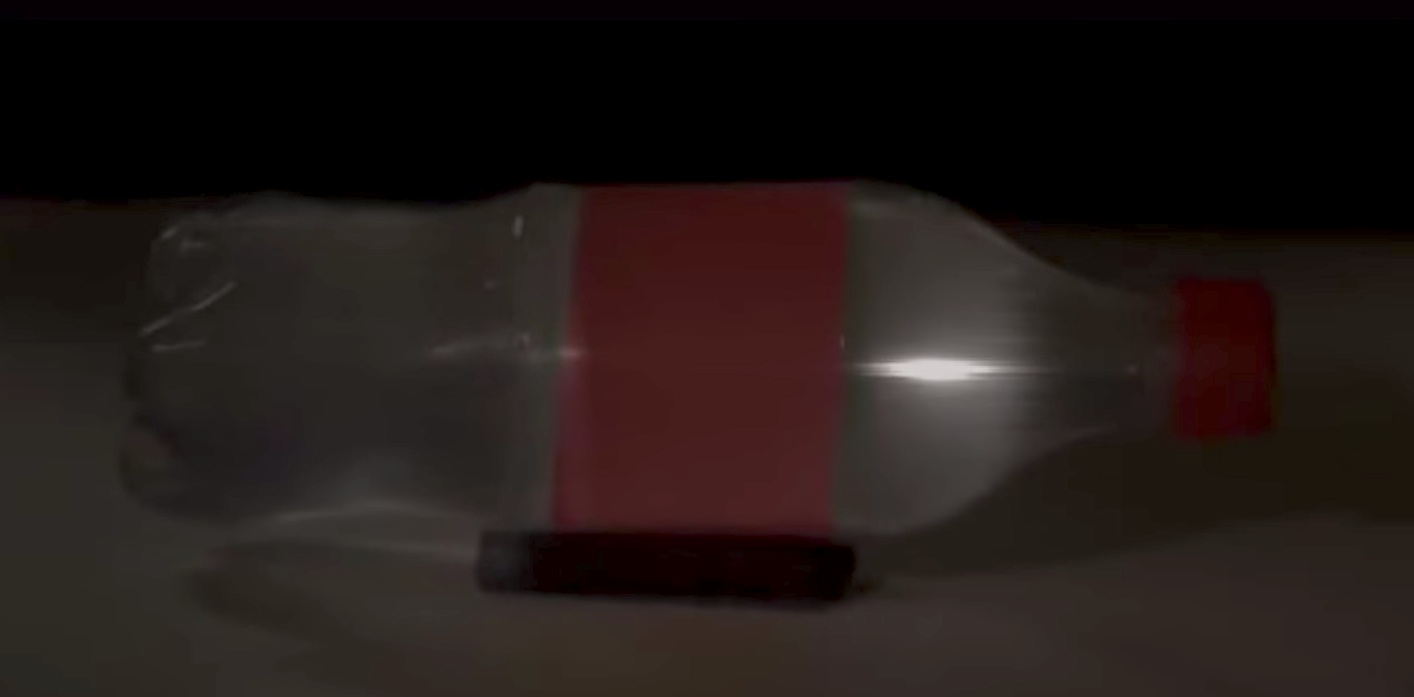
«But thats impossible», most of half studied engineers will say. And we agree. It sounds unbeliveable. But, sorry, here it is, light moving, cought on film.
This is the story behind it:
Instead of a single camera, scientists at MIT developed an array of 500 sensors that are activated on a delay to capture laser pulses that are emitted ever 13 nanoseconds. When all of the information is put together, it creates an image that works sort of like a strobe light, making the laser pulses appear to travel through the bottle at the equivalent of 1 trillion fps.
They say:
«We have built an imaging solution that allows us to visualize propagation of light at an effective rate of one trillion frames per second. Direct recording of light at such a frame rate with sufficient brightness is nearly impossible. We use an indirect ‘stroboscopic’ method that combines millions of repeated measurements by careful scanning in time and viewpoints.
The device has been developed by the MIT Media Lab’s Camera Culture group in collaboration with Bawendi Lab in the Department of Chemistry at MIT. A laser pulse that lasts less than one trillionth of a second is used as a flash and the light returning from the scene is collected by a camera at a rate equivalent to roughly 1 trillion frames per second. However, due to very short exposure times (roughly one trillionth of a second) and a narrow field of view of the camera, the video is captured over several minutes by repeated and periodic sampling.»
And of course, yes, the light is mooving in a Coca Cola-bottle.